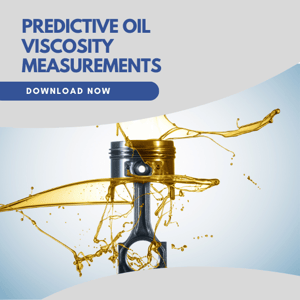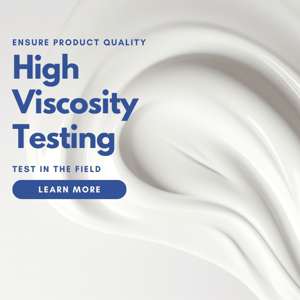
Viscosity of Two Component Mixtures
Viscosity of Two Component Mixtures
Alcohols are organic compounds ubiquitous in chemical engineering processes. They are widely used as solvents for gums, resins, lacquers, varnishes and dyes. Applications include medical, recreational, development of dyes and fuel additives. In many of these applications, they are present as non-ideal mixtures with water, for which a small change in concentration can result in a dramatic change in viscosity. The viscosity of these mixtures presents a strong non-linear dependence in concentration with a maximum value well above the viscosity of either pure component. The strong dependence on concentration at either side of this maximum makes viscosity an ideal parameter for quality control purposes. In addition, modeling of industrial processes utilizing such fluids requires proper characterization of viscosity.
Alcohols are organic compounds ubiquitous in chemical engineering processes. They are widely used as solvents for gums, resins, lacquers, varnishes and dyes. Applications include medical, recreational, development of dyes and fuel additives. In many of these applications, they are present as non-ideal mixtures with water, for which a small change in concentration can result in a dramatic change in viscosity. The viscosity of these mixtures presents a strong non-linear dependence in concentration with a maximum value well above the viscosity of either pure component. The strong dependence on concentration at either side of this maximum makes viscosity an ideal parameter for quality control purposes. In addition, modeling of industrial processes utilizing such fluids requires proper characterization of viscosity.
|
Pure Liquid |
Viscosity |
Ref. Viscosity |
Ref. Density |
|
-- |
[mPa-s] |
[mPa-s] |
[g/cm3] |
|
Water |
0.904±0.003 |
0.894 |
0.994 |
|
EtOH |
1.104±0.003 |
1.084 |
0.793 |
|
IPA |
2.093±0.003 |
2.081 |
0.810 |
Table 1 presents viscosity measurements obtained using microVISC™ and reference values of viscosity
and density for the water, ethanol and isopropyl alcohol samples in this study.
In figure 1, we present viscosity of Water-EtOH and Water-IPA mixtures as a function of the alcohol volume fraction. We obtain excellent agreement with reference data obtained through conventional methods [1, 2]. For comparison purposes, we include density reference data on these two mixtures.
In light of these results, it is evident that the weak dependence of density on concentration makes it a poor indicator of the content in solvent concentration in the mixture.
Conventional viscometers have to deal with the additional challenge of volatility of these organic solvents which increases measurement difficulty and may affect results. RheoSense’s microVISC™ unit provides a closed measurement system suppressing evaporation as a source of uncertainty. As a result, microVISC™ enables consistent viscosity measurements with high accuracy and repeatability.
Capillary and funnel type viscometers [1, 2] measure apparent kinematic viscosity of fluids. The test fluid is allowed to flow though a capillary or from a funnel and the time to travel between two lines or to dispense a given volume is recorded. This time is then converted to kinematic viscosity using a calibration constant or equation. Using the fluid’s density, dynamic viscosity can be calculated as: η=υρ𝜼=𝝊𝝆
To obtain accurate measurements, these conventional viscometers often require long measurement times while microVISC™ measurements take just a few seconds. Additionally, an optional Temperature Control (TC) unit can be used with microVISC™. The small sample volume (less than 400 µL) allows the microVISC® + TC solution to achieve temperature stability in 3-5 minutes. This results in additional time savings when compared to conventional baths used to achieve temperature equilibrium.








